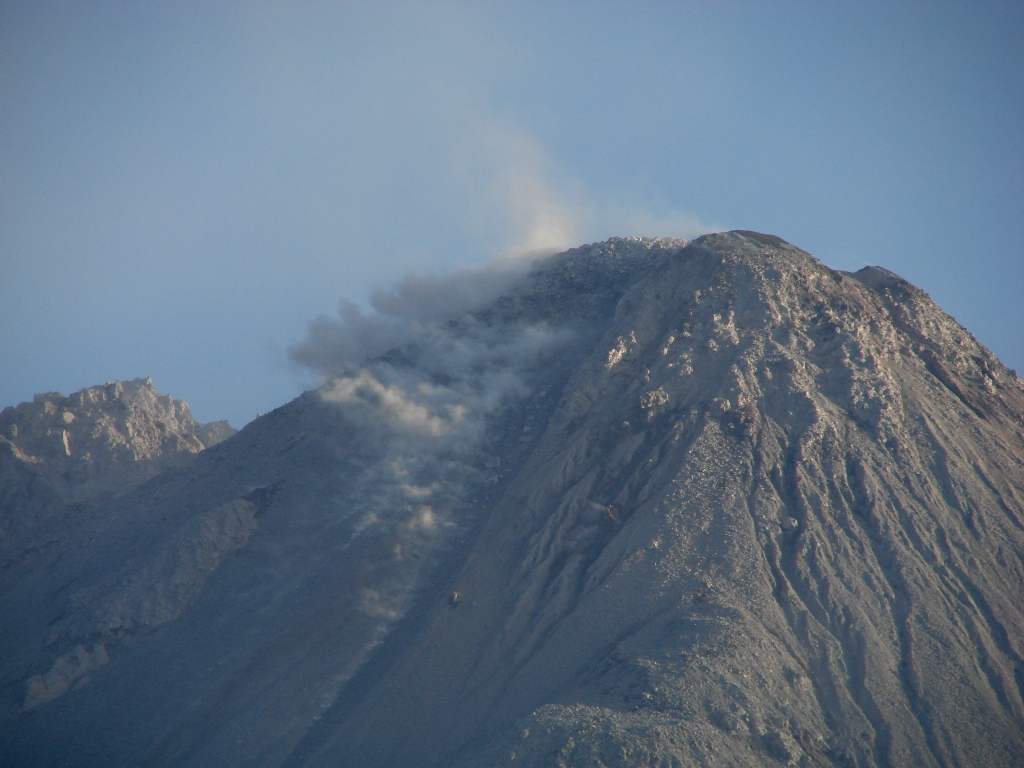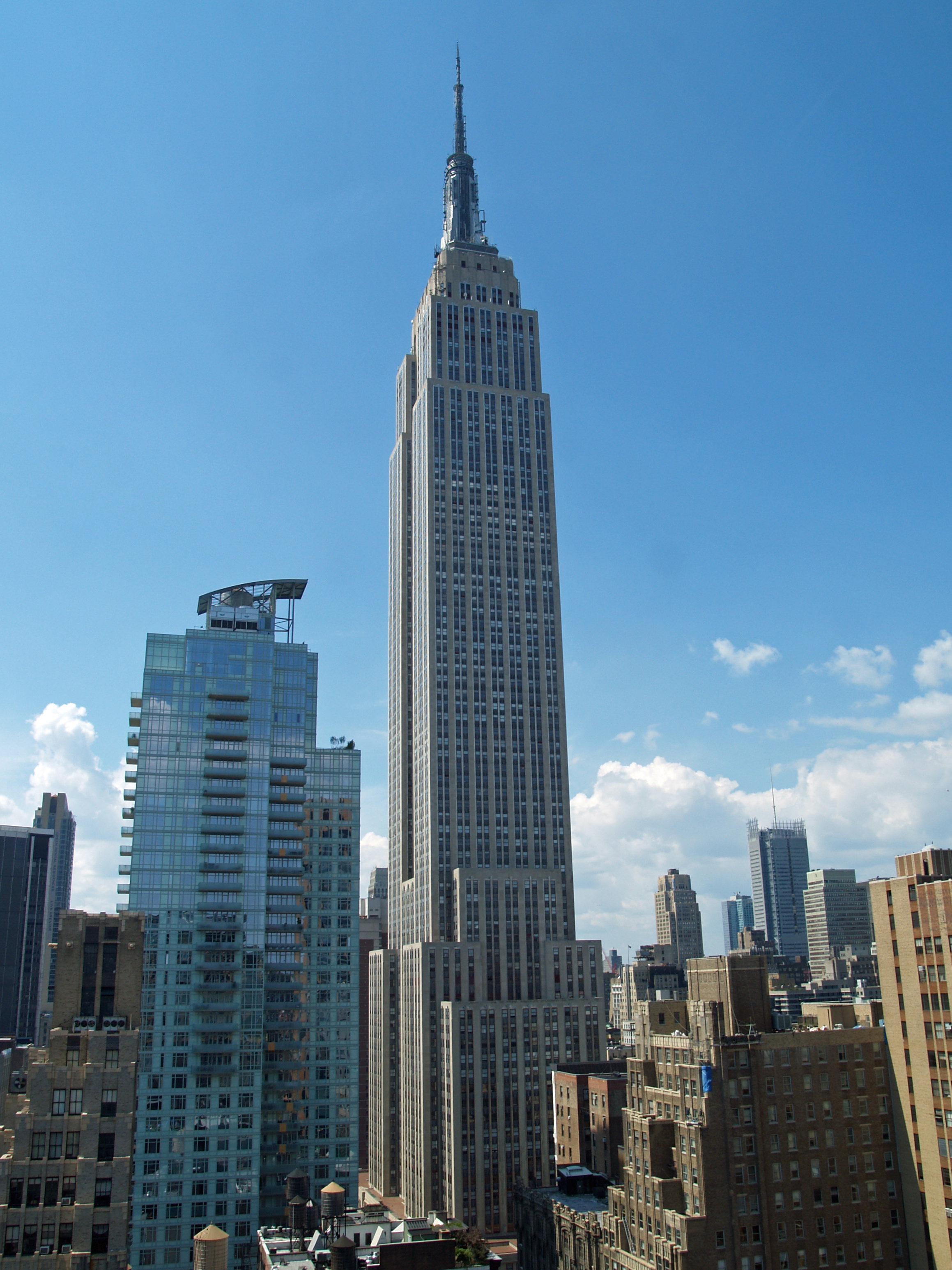20 November 2010
Eruption rates at volcanoes
Posted by Jessica Ball
One of the things that I come across when I’m working on my thesis is details about how much lava is being produced at a volcano (usually in a volume flux, such as cubic meters/second). In my case, it has to do with how quickly a lava dome is growing, though this also applies to more fluid eruptions as well. But it can be hard to put these numbers into perspective unless you do a little visual translating.
For instance, take my field area. The Santiaguito dome complex is about 1.1 cubic km in volume, and it grows at rates of ~0.5 to 2.0 cubic meters per second (when there’s lava flow being erupted) – let’s say about 1 cubic meter per second, for simplicity. But what does that look like?

A steaming lava flow overspilling the summit of the Caliente dome, Santiaguito lava dome complex, Guatemala
Well, to start with, a cubic centimeter is roughly the volume of a Jelly Belly jelly bean:
So, since a meter is 100 cm on a side, it would take 100 X 100 X 100 jelly beans to make up a cubic meter, or one million jelly beans.
That’s a cubic meter of concrete, which not as tasty as jelly beans and a bit denser than lava, but sort of rock-ish. So, a flux of a cubic meter per second means that the volcano is spitting out one of these blocks (one million jelly beans) every second or so, or around 86,400 cubic meters (86.4 billion jelly beans) per day.
All that lava builds up. Remember when I said that Santiaguito is about 1.1 cubic kilometers in volume? That amounts to about a billion cubic meters. For comparison, the volume of the Empire State Building is about 1.05 million cubic meters – so the volume of the domes at Santiaguito is roughly equal to one thousand Empire State Buildings, or around 1.1 trillion jelly beans. Pretty big, huh?

When it comes to volcanoes – especially when you’re comparing viscous to fluid lavas, the eruption rate at Santiaguito is a slow rate – volcanoes like Kilauea, which makes those nice fire fountains and really fluid lava flows, can have a volume flux of 5 or 6 cubic meters per second, hundreds of thousands of cubic meters per day – perhaps up to millions. Instead of producing tens of billions jelly beans per day, Kilauea could produce hundreds of billions of jelly beans, or half an Empire State Building every day.
Volcanic eruptions fascinate me not just because they’re flashy and exciting, but because they create new rock – new land, in a general sense – and they do it on such a grand scale. It’s hard to comprehend just how much material is involved into you start to break it down into bits you can visualize. And even then, that’s a lot of jelly beans.




 Jessica Ball is a volcanologist at the U.S. Geological Survey, researching volcanic hydrothermal systems and stability, and doing science communication for the California Volcano Observatory. She previously worked at the Geological Society of America's Washington DC Policy Office, learning about the intersection of Earth science and legislative affairs. Her Mendenhall postdoc and PhD focused on how water affects the stability of volcanoes, and involved both field investigations and numerical modeling applications. Her blogging covers a range of topics, from her experiences in academic geosciences to science outreach and communication to her field and lab work in volcanology.
Jessica Ball is a volcanologist at the U.S. Geological Survey, researching volcanic hydrothermal systems and stability, and doing science communication for the California Volcano Observatory. She previously worked at the Geological Society of America's Washington DC Policy Office, learning about the intersection of Earth science and legislative affairs. Her Mendenhall postdoc and PhD focused on how water affects the stability of volcanoes, and involved both field investigations and numerical modeling applications. Her blogging covers a range of topics, from her experiences in academic geosciences to science outreach and communication to her field and lab work in volcanology.
I’m reading a paper* on the Eyjafjallajökull eruption that says it produced 25 million cubic meters (~13 cubic meters per second) between April 9-12. Just thought I’d let you know that I came back here to use your article as another scale reference. It was pretty helpful, so thanks!
*Sigmundsson et al. (2010) Intrusion triggering of the 2010 Eyjafjallajökull explosive eruption. Nature, v. 468.
[…] Magma Cum Laude: Eruption rates at volcanoes […]
[…] alongside Brian Romans, Evelyn Mervine, Chris Rowan and Anne Jefferson, David Bressan, Silver Fox, Jessica Ball, Matt […]
volcanoes are cool
how big is the average volcano? What is a volcano made of?